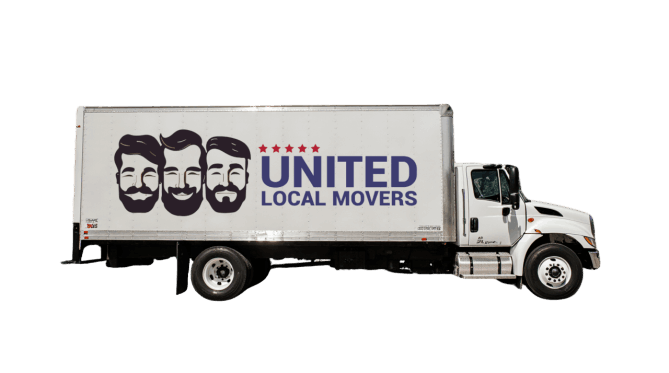Home > Interstate Moving > Moving to New York > Moving to Buffalo
Moving to Buffalo
Buffalo, New York, is the second-largest city in the state, with a population of about 275,000 and more than 1 million in the metro area. Known as the “Queen City,” Buffalo offers an affordable cost of living, revitalized neighborhoods, and a strong sense of community. Once an industrial powerhouse, the city has reinvented itself with investments in healthcare, education, and technology. Its proximity to Niagara Falls, Lake Erie, and Canada adds to its appeal. Families, professionals, and retirees alike are discovering that Buffalo offers big-city amenities with small-town friendliness.

Why More People Are Moving from Other States to Buffalo
Buffalo is attracting newcomers from states with higher living costs, such as California, New Jersey, and Massachusetts. Families are drawn to its affordable housing, quality schools, and access to parks and recreation. Professionals benefit from opportunities in healthcare, education, and tech, while retirees appreciate its affordability, cultural scene, and proximity to natural wonders. With major revitalization projects downtown and along the waterfront, Buffalo is experiencing a new wave of growth that continues to attract residents.
Pros of Living in Buffalo
Buffalo offers numerous advantages. Housing is significantly more affordable than the national average, and the cost of living overall is relatively low. The city is known for its strong sense of community, cultural institutions like the Albright-Knox Art Gallery, and historic architecture. Outdoor enthusiasts enjoy access to Lake Erie, Niagara Falls, and nearby ski resorts. Sports fans are passionate about the Buffalo Bills and Sabres, adding to the city’s energy. Buffalo also has a growing food scene, famous for its chicken wings and diverse cuisine.

Ready to get moved? Get a FREE quote now
Book your move easily and stress-free!
Cons of Living in Buffalo
Despite its strengths, Buffalo has challenges. Winters are long and snowy, with heavy lake-effect snowstorms that can make commuting difficult. While the economy has diversified, some industries still offer fewer high-paying jobs compared to larger metros. Public transportation options are limited outside of the city center, making cars necessary for most residents. While revitalization is ongoing, some neighborhoods are still struggling with economic challenges.

What Life is Like in Buffalo
Life in Buffalo is affordable, family-friendly, and community-oriented. Families benefit from good schools and recreational programs. Retirees enjoy access to healthcare, cultural events, and a slower pace of life. Professionals can balance careers with outdoor recreation and a lower cost of living. Daily life may include walking along Canalside, attending a Bills game, visiting art galleries, or enjoying a vibrant food scene. Buffalo blends affordability with rich history and culture, making it a rewarding place to live.
Living Costs in Buffalo
| Category | Buffalo | National Average |
|---|---|---|
| Housing (Rent per Month) | $1,200 | $1,570 |
| Utilities | $175 | $180 |
| Groceries | $310 | $330 |
| Transportation | $135 | $140 |
| Healthcare | $425 | $440 |
Buffalo’s affordability is one of its biggest draws, with housing and daily expenses well below the national average.

Ready to get moved? Get a FREE quote now
Ready to get moved? Get a FREE quote now
Schools and Education in Buffalo
Buffalo is served by Buffalo Public Schools, which includes specialized magnet and charter schools. Families also have access to private and parochial schools. Higher education is strong in the area, with institutions like the University at Buffalo, Canisius College, and Buffalo State University providing excellent programs and opportunities. The presence of multiple universities contributes to a youthful and dynamic atmosphere.
Transportation and Getting Around
Buffalo is largely car-dependent, though the Niagara Frontier Transportation Authority (NFTA) provides bus and limited light rail service within the city. Interstate highways connect Buffalo to Rochester, Syracuse, and Toronto. Buffalo Niagara International Airport offers convenient domestic flights, while Canada is just minutes away by car. While public transit options are limited, commuting times are generally shorter compared to larger cities.

United Local Movers: Our Services
Relocating to Buffalo is simple with United Local Movers. We provide professional moving services, including local relocations, long-distance moves, packing services, and secure storage. Our team is experienced in handling New York moves, ensuring efficient, reliable service. With transparent pricing and a customer-first approach, United Local Movers makes moving to Buffalo stress-free.
Average Cost to Move to Buffalo
| Move Type | Estimated Cost |
|---|---|
| Local Move (1-2 Bedrooms) | $1,100–$1,800 |
| Cross-Country Move | $3,900–$6,800 |
| Full Packing Services | + $350–$850 |
| Storage Options | $160–$300 per month |
Relocation costs to Buffalo are lower than to many large U.S. cities, making it a budget-friendly option for families and professionals.


How to Choose the Right Moving Company
When moving to Buffalo, it’s important to choose a licensed, insured moving company with experience in New York relocations. Look for movers with strong customer reviews, transparent pricing, and flexible services such as packing and storage. United Local Movers offers all of these qualities, ensuring your move to Buffalo is efficient, affordable, and stress-free.
Final Thoughts
Buffalo, New York, offers affordability, culture, and strong community spirit. While winters can be challenging and some industries limited, its affordable housing, revitalized downtown, and proximity to natural attractions make it an excellent relocation choice. Families, professionals, and retirees alike will find Buffalo welcoming and rewarding. With United Local Movers as your trusted partner, your move to Buffalo will be smooth, reliable, and the beginning of a new chapter in Western New York.





